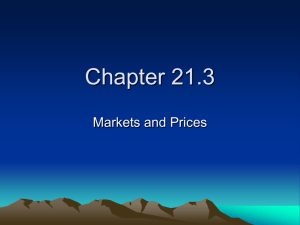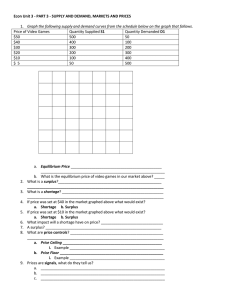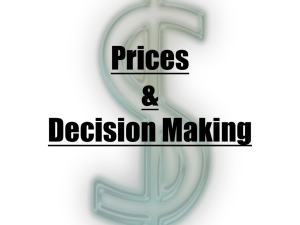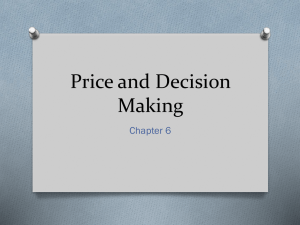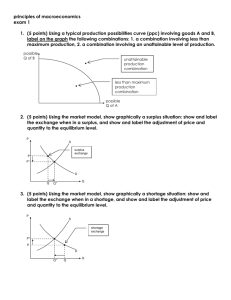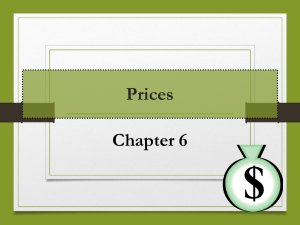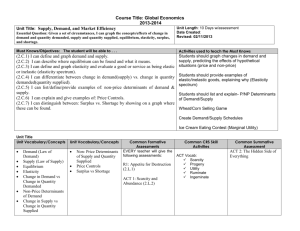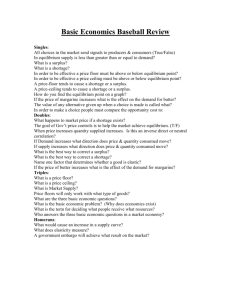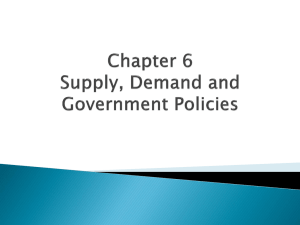Chapter 6 Prices and Decision Making
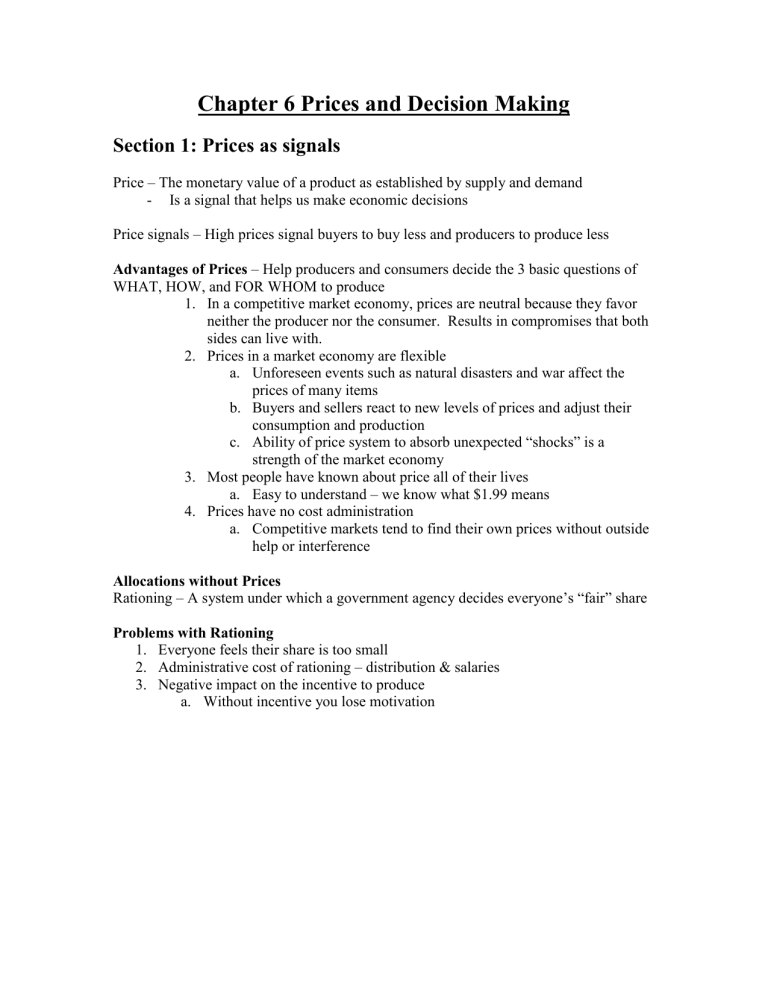
Chapter 6 Prices and Decision Making
Section 1: Prices as signals
Price – The monetary value of a product as established by supply and demand
Is a signal that helps us make economic decisions
Price signals – High prices signal buyers to buy less and producers to produce less
Advantages of Prices – Help producers and consumers decide the 3 basic questions of
WHAT, HOW, and FOR WHOM to produce
1.
In a competitive market economy, prices are neutral because they favor neither the producer nor the consumer. Results in compromises that both sides can live with.
2.
Prices in a market economy are flexible a.
Unforeseen events such as natural disasters and war affect the prices of many items b.
Buyers and sellers react to new levels of prices and adjust their consumption and production c.
Ability of price system to absorb unexpected “shocks” is a strength of the market economy
3.
Most people have known about price all of their lives a.
Easy to understand – we know what $1.99 means
4.
Prices have no cost administration a.
Competitive markets tend to find their own prices without outside help or interference
Allocations without Prices
Rationing – A system under which a government agency decides everyone’s “fair” share
Problems with Rationing
1.
Everyone feels their share is too small
2.
Administrative cost of rationing – distribution & salaries
3.
Negative impact on the incentive to produce a.
Without incentive you lose motivation
Section 2 – The Price System at Work
The Price Adjustment Process
Transactions in a market economy are voluntary, the compromise that settles the differences between buyers and sellers must be to the benefit of both, or the compromise would not occur.
A Market Model
Economic Model – Analyzes behavior and predicts outcome
See Figure 6.1
When demand and supply curves are combined, we have a complete model of the market, which will allow us to analyze how the interaction of buyers and sellers results in a price agreeable to all market participants
Supply and demand curves intersect at a specific point called Equilibrium price, which the number of units produced equals the number of units sold. It means that at this price there is neither a surplus nor a shortage of the product in the market.
Surplus
A situation in which the quantity supplied is greater than the quantity demanded at a given price
Price tends to go down as a result of the surplus. The model cannot tell us how far the price will go down, but we assume price will go down only a little if surplus is small, and much more if surplus is larger.
Shortage
A situation in which the quantity demanded is greater than the quantity supplied at a given price.
As a result of the shortage, both the price and the quantity supplied will go up in the next trading period.
Equilibrium Price
Temporary surpluses and shortages will always push the price towards equilibrium
Explaining and Predicting Prices
1.
Change in Supply – Causes graph to shift
2.
Change in Demand – Causes graph to shift
3.
Change in Supply and Demand – Disasters- Hurricane – Causes Supply decrease (Shift Left) & demand goes up (Shift right)
The Importance of Elasticity
Whenever supply or demand for product fluctuates, the elasticity of the 2 curves affects the size of the price change
If we know the elasticity of each curve we can predict price change
Section 3 – Social Goals & Market Efficiency
Distorting Market Outcomes
1.
Price Ceilings – Maximum legal price that can be charged for a product a.
Ex – Rent Control b.
See Figure 6.4 – NY housing controlled to be more affordable i.
How does that affect supply? Creates a permanent shortage ii.
Are consumers better off? Leads to poor conditions but cheaper rent
2.
Price Floors – Lowest legal price that can be paid for a good or service a.
Ex – Minimum Wage i.
How does that affect supply? Creates a surplus ii.
Is minimum wage good or bad? Not efficient
1.
Raises poor’s income but employers higher less workers
